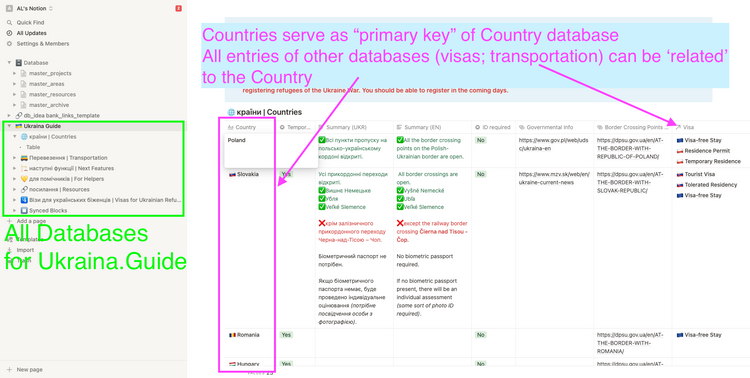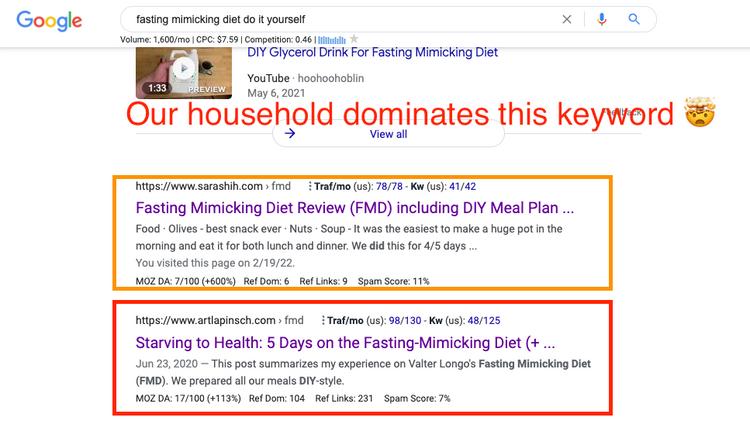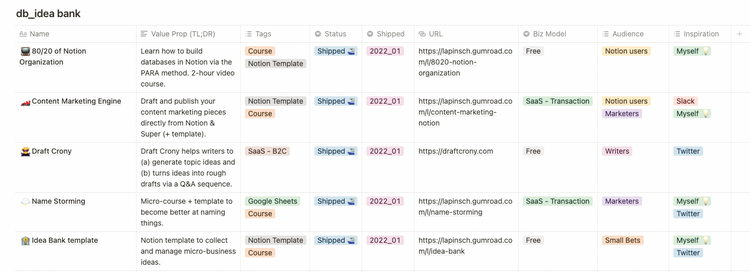Twelve Projects: Update 1.2 (Mental Game & January Review)
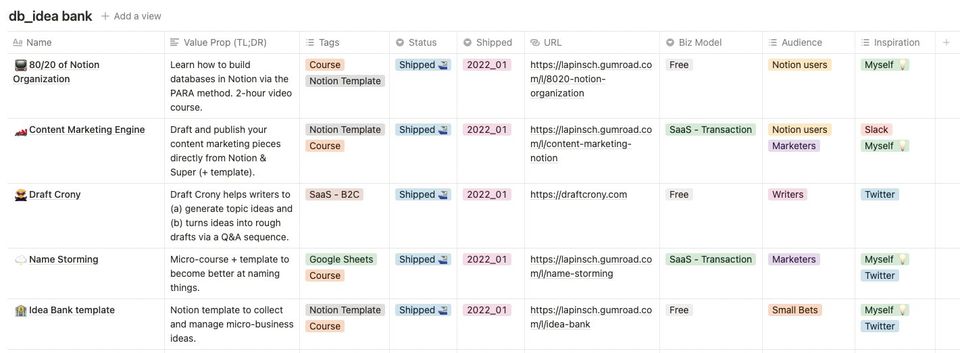
This year I'm building my personal studio by shipping 12 projects in 12 months (original post; update 1.1).
Thanks to everyone who read & responded to the last piece (Ryan; Jan; Flo; Marko; Filip; Phil; Dom). I appreciate this a lot.
This is my second update about the process and today I want to cover the following:
- How I deal with the mental aspects of this journey
- Recap of what I have shipped in January
- Personal notes and takeaways so far
- Response to some of your questions
Let's get at it.
The Mental Game
My friend Ryan, mentioned that he's particularly interested in the "not so cool side" of the creator journey.
I would love to read about the mental / psychological side of things.
— Ryan is Learning 🚀 (@RyanChadha) January 18, 2022
What worries you? What are you concerned about? What if this doesn't take off? The demons...
This journey is as much about fortitude and reading about the not so cool side of being a creator would be 👌
What worries you? What are you concerned about? What if it doesn't take off?
To be completely honest, I haven't spent too much time thinking about this.
The practical way of rationalizing this is that "the only thing I can influence is what I'm doing right now".
One of the best mental models for that is the "Systems vs. Goals" idea from Scott Adams.
- A system is something you do every day, which gets you from "low odds" of success to "better odds" of success.
- A system has a built-in failsafe where you are better off even if you don't reach your desired goal
Scott talks about this idea at length on the Tim Ferriss podcast. Another golden nugget in that episode is the "Talent/Skill Stacking" idea.
Those two combined are the reason why I don't worry too much.
What's my (first) goal?
My goal is to create scalable products (info products & micro-SaaS), which generate enough income to cover my cost of living - which I discussed in the FAQ section of this post.
What's my system?
My system is to experiment by building and shipping 12 projects in 12 months and see if any of those help me to reach my goal.
There are three possible scenarios:
- 🎉 Best Case: The projects generate more than enough to cover my cost of living. I'm profitable.
- 👍 Base Case: The projects just about cover my cost of living. I'm cashflow neutral/positive.
- 👎 Worst Case: The projects don't cover my cost of living.
The interesting thing about the worst-case scenario is that there are like fifty shades of worst.
- 😱 Worst Case (Bad): It could mean that I make €0 in income and spend a regular monthly overhead on maintaining the projects. I lose money every month.
- 😐 Worst Case (Neutral): It could mean that I make enough income to cover my fixed costs. I don't lose money but I also don't earn any surplus.
- 🙃 Worst Case (Not so bad after all): It could mean that I earn more than what I spend on maintaining the projects but that it is not (yet) fully covering my cost of living. This actually means that I make passive income every month 🤯
The above is why I don't worry too much. At the very worst I would wind down my monthly expenses, look for a job, and have a year's worth of project building experience.
I hope this gives you a small glimpse into my thinking.
If you have further questions, please let me know.
What Did I Ship in January?
- Content Marketing (Template to write & publish via Notion x Super)
- 80/20 of building databases in Notion (Video course)
- Idea Bank template to collect and manage micro-project ideas (Notion template)
- Name Storming micro-course to become better at naming things (Video course + Google Sheets template)
- Draft Crony: A micro-SaaS tool for writers to go from idea to draft
Most of these are hosted and sold/distributed via Gumraod.
Draft Crony is the only product, which has a no-code backend.
Credit where credit is due. @carrd has to be one of the biggest bang-for-the-buck tools in the Creator Stack
— Art Lapinsch 🐽 (@artlapinsch) January 20, 2022
💶 Pro plan: $19/yr
🧑💻 Includes 10 sites w/ custom domains!
🔐 SSL certificates built-in
Honestly, I can run 10 bets on this service for $19/yr 🤯
$19/yr for 10 landing pages + SSL certificates built-in. Using it in combination with namecheap.com is the ultimate low-cost domain stack.
The Results So Far: No (Direct) Revenue but Early Signs of Life
In January I made not a single dime in revenue 🦗
But that's ok. At the very least my info products are packaging some of my training that I would give over 1-2 hour long video calls. Now if I get a request, I can just send them the recording and potentially charge for it.
I'm saving time! That's a fat win in my book.
Other than the monetary side of things:
- Gained 18 new email subscribers (now at a total of 212 readers)
- Distributed 28 products via Gumroad
- Had 49 user flows through Draft Crony
- Increased traffic to artlapinsch.com to >1k readers over a 30-day period // this usually happens if I publish more
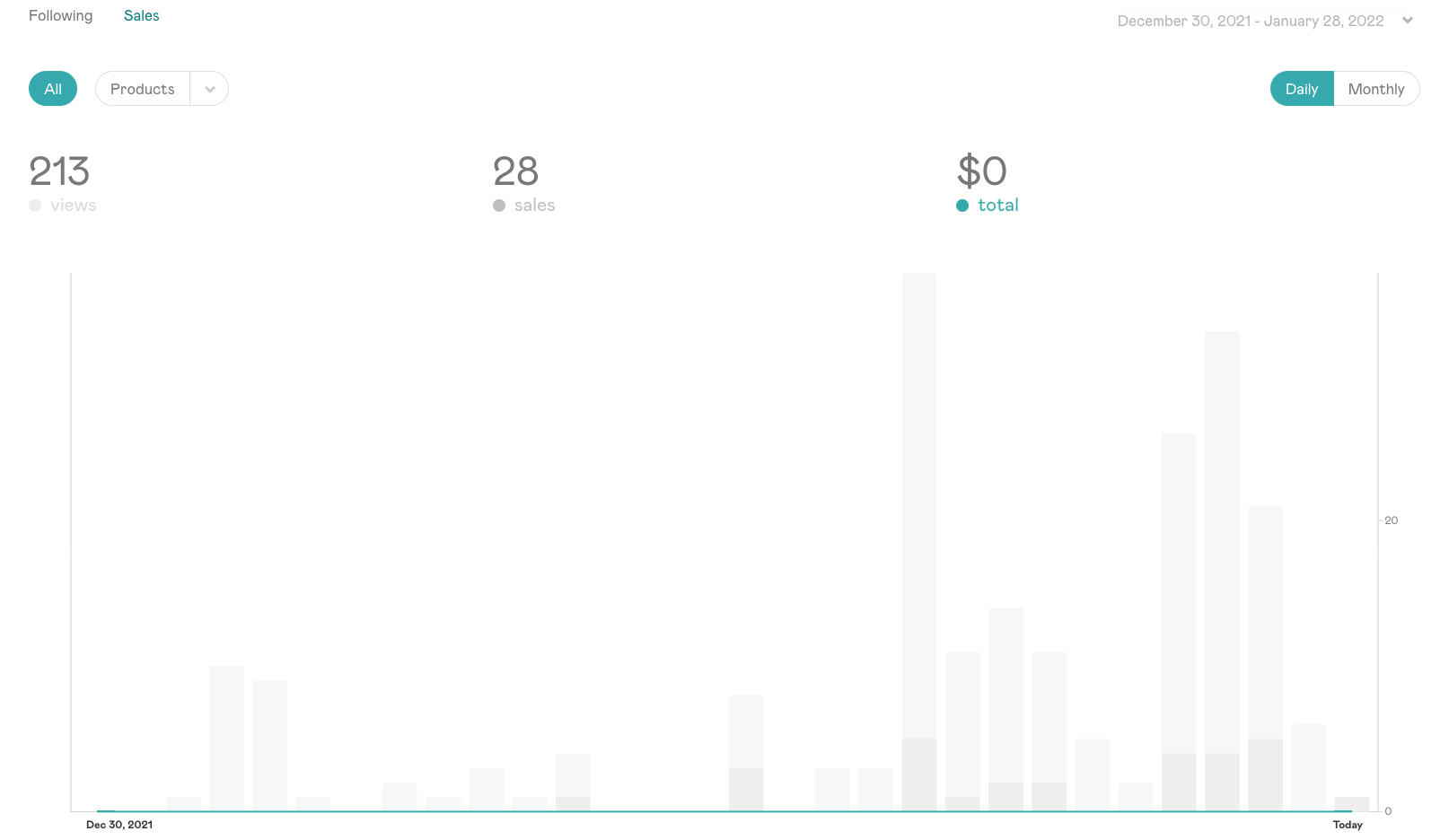
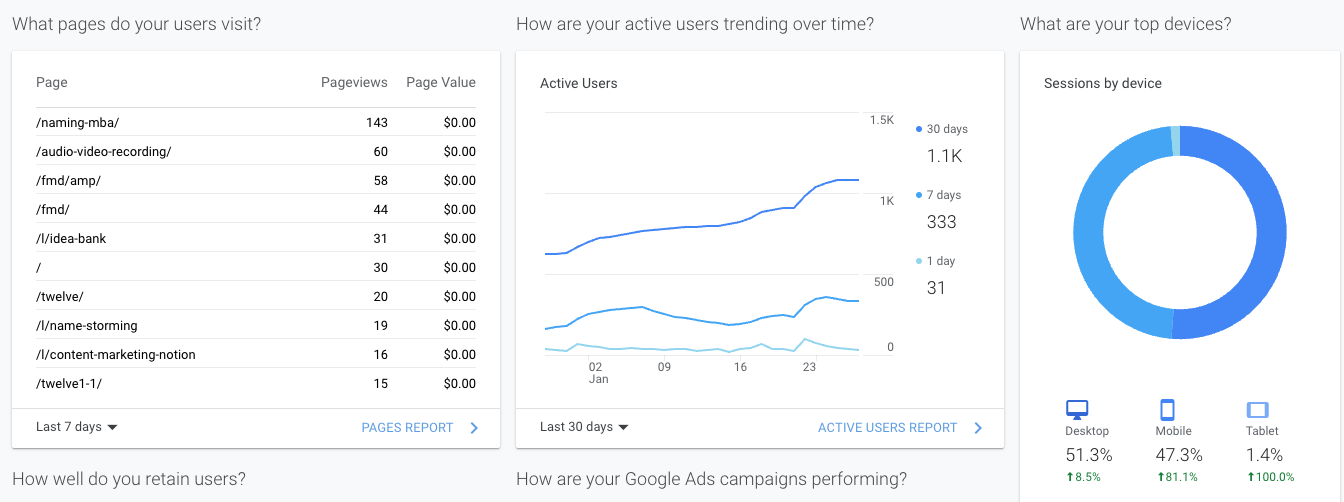
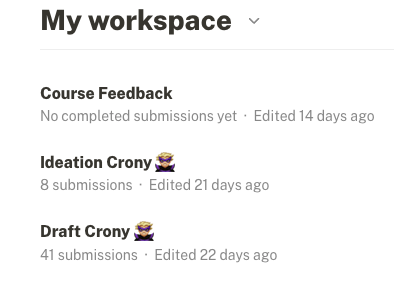
One of the coolest things was that a friend who tested the Content Marketing template paid me for an hour of consulting. We customized the template to his specific needs as he's writing a book this year.
He wanted to make sure that he had a system in place to collect, write, and publish his essays. At the end of the year, he will bundle and edit those essays into chapters of a book.
Here's the website he built with Notion & Super + my template 👇

My Monthly Overhead: The Cost of Six Frappuccino Grandes at Starbucks
- Carrd as a landing page ($19/yr)
- Tally Forms as Q&A flow (free)
- Zapier to pipe data from Tally into Gmail ($239.88/yr)
- Gmail as a channel to send structured Q&A replies to users (free)
- draftcrony.com domain via united-domains.de (€19/mo)
- namestorming.xyz domain via namecheap.com ($0.89/yr)
Total cost per month ~$24/mo
Most of the cost comes from my annual Zapier plan, which I'm not even maxing out. If you'd want to reduce costs you could (1) go with the free Zapier plan, or (b) try one of the other more affordable alternatives like Integromat, Automate.io, or even n8n.io if you are more technical.

Personal Notes from a Month of Building
Going into the challenge I had the following assumptions:
- 1 month is very short to build & ship
- I will ship less than 12 projects (similarly to what @levelsio & @yongfook did)
- Products need to be polished/sophisticated before I can "launch" them
- If people tell me that they NEED a product, they will also drop everything to test & use it once I launch 🙄
TL;DR: I was wrong. You don't know what you don't know.
My Notes
- Ship fast. Ship often. Half-baked and published ideas will get a response. Perfect ideas, which live in your head, don't.
- Artificial deadlines are a godsend. They are a forcing function.
- "A month is too short to ship". Somewhere in the process I built/shipped an info product (ideation, build, creation of a landing page; etc.) in one day and that became the norm. Projects 3-5 were all built & shipped in one day. Yes, those are easy to do because it's effectively a template + a one-take video recording but I could have been much slower.
- Build the shipping muscle and get better at some of the associated workflows (writing landing page copy; creating visual assets for the landing pages; testing + shipping the user flows; etc.). I am sure this will help me for the upcoming months/projects.
- "'Build in public and they will come.' they said" ... Not sure about this one. I get occasional responses but it's far from a safe bet to build an audience. At least it's too early to tell. BIP is definitely helpful to document everything. When I write blog posts, I just embed the build-in-public tweets to avoid writing the same copy more than once.
- In early Jan I participated in Daniel Vassallo's "Portfolio of Small Bets" cohort → great group of people and the main takeaway was: "The world is random. You don't know what will be successful. That's why you should create a lot of small bets to build serendipity/luck surface area" ... that's kind of how I'm thinking about the 5 small projects from January
- Most of these products are currently free. Instead of monetizing I'm piping the email addresses of users into my ghost newsletter and trying to build my audience. My guess is if people don't like the stuff, they will unsubscribe. Alternatively, if they find the products useful, then chances are they are interested in the behind-the-scenes writeups.
- It's fun.
- I'm sure pretty the shipping cadence will change in the coming weeks. I don't know if I'll ship more or less though 🤷♂️
- I'm excited/anxious about stepping outside of my comfort zone (info products + educational content) into new product areas/types.
That's it for now. I'm sure more observations will follow.
Frequently Asked Questions
Typing this headline I realized that the questions I'm answering here are not "frequently asked". Just "asked".
But anyway, I'll just call it FAQs for now 😂
Why "Brand Strategy"?
In March 2021 I published my first info product: a video course about Brand Strategy.
My friend Jan asked something along the lines of:
- Why did you pick "Brand Strategy" as the topic for your first course?
- "It's a frequently discussed topic + if I'd look for advice I'd look at stuff from larger agencies/entities/etc. I would have a tough time believing that an unknown person from the internet is more trustworthy."
- "Why did you create an online course and not an eBook or article?"
Let's answer these step-by-step:
Why did you pick "Brand Strategy" as the topic for your first course?
Back in February 2021, I applied for a program called OnDeck Course Creators.
One of the questions on the application form was something to the tune of "did you validate your course idea with a paid product?" and my jaw dropped.
I hadn't yet. Rookie mistake. So in order to generate some learnings before starting the program in March, I wanted to create + publish a course during the month of February.
Since it was an aggressive deadline I didn't have the time to do research about a topic. I needed to teach something I was deeply familiar with.
One of my areas of expertise is Brand Strategy
- I majored in International Marketing Management during my Bachelor degree
- I did my post-graduate studies in "Marketing & Creativity" - which is fancy-speak for "creative advertising" (think of agency work; publishing; luxury)
- I spent the last 15 years reading, thinking, and writing about brands ... something about this topic just rustles my Jimmies in the right way
- I've customized a framework called Brand Pyramid, which I've used and taught actively over the past 5+ years to create new brands (personal + startups) and align existing brands (corporate)
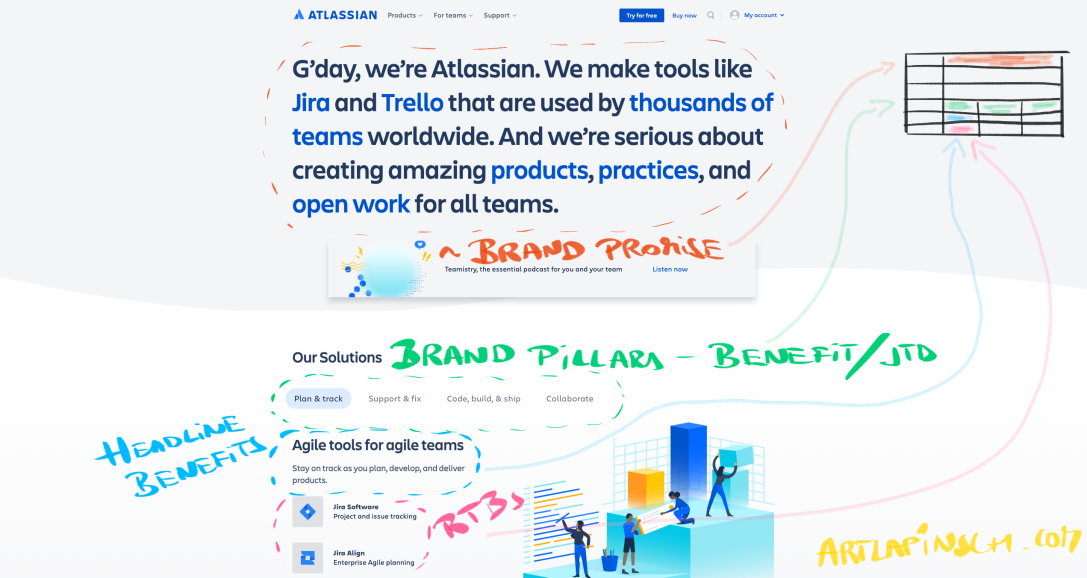
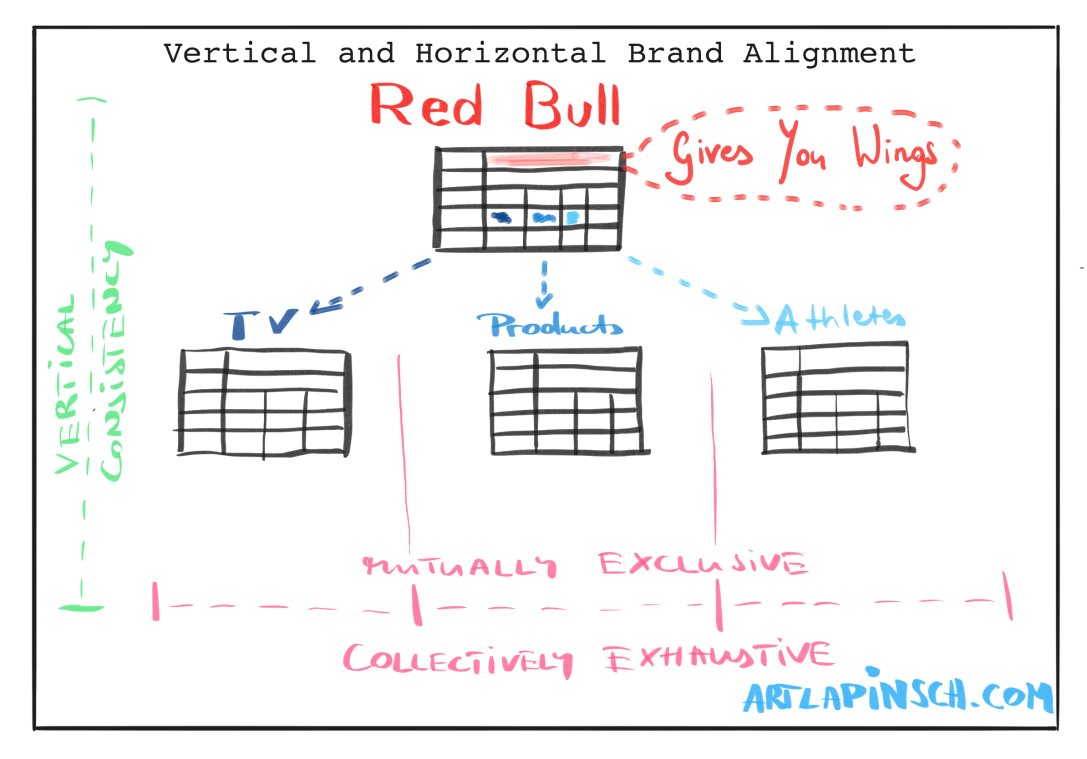
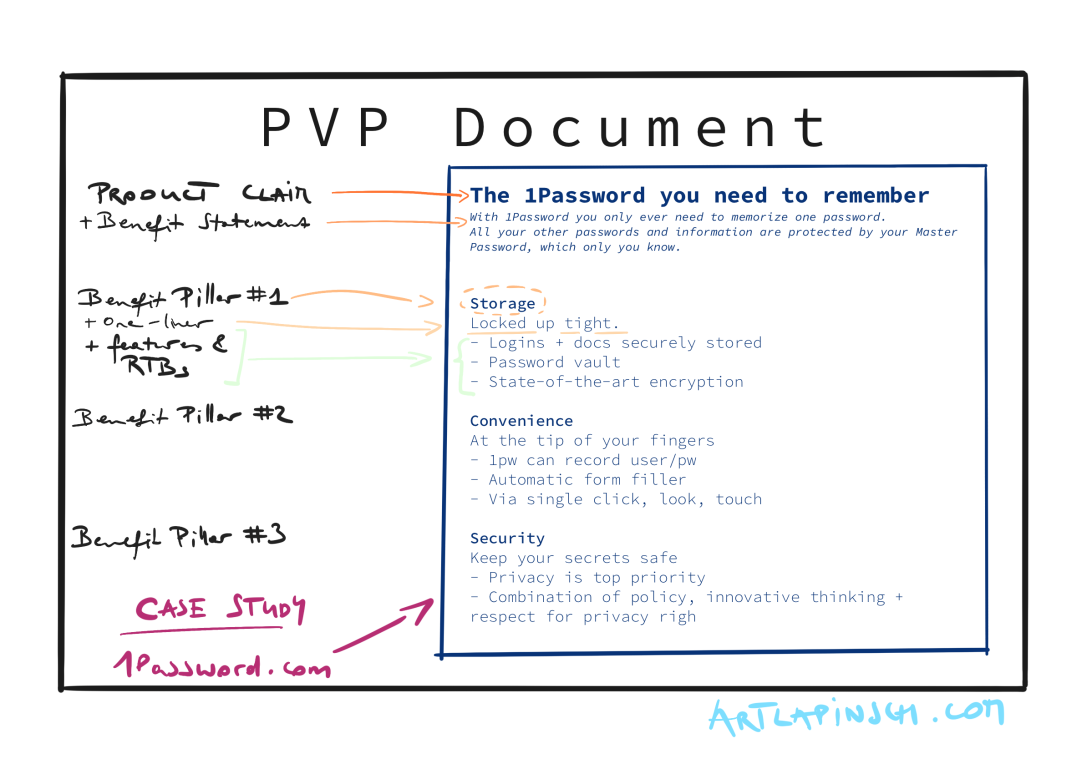
I have seen pitches for corporate rebranding where the agencies used a variation of the Brand Pyramid method (similar to the one I outlined above) as the backbone of the entire project.
The quoted cost of the project was north of $500k+
I felt like I could turn some of my insights into a short video course.
What followed was a month-long sprint to get this course up and live. I documented the whole process in this thread.
My favorite post was when I had to record the course video/audio in our flatshare. The problem was that I was sharing a room with my girlfriend, who needed to work as well and her keyboard click sounds were picked up by my microphone. We found a "simple fix":
No silence. No problem.
— Art Lapinsch 🐽 (@artlapinsch) March 1, 2021
Recording in a room with another professional is tricky. Mouse clicks + keyboard are super audible.
Our quick'n'dirty hack:
1. pillows as sound barrier
2. my gf put cloth on top of her input devices (mouse > hand > cloth) to absorb sound
👌 pic.twitter.com/xk6sFHDDAB
Credibility of an Online Clown and Why the Solopreneur Opportunitiy Makes Sense to Me 🤡
Am I a clown? Yes.
Are big corporates also clowns? Yes.
The internet economy is massive. Even bigger than you might imagine. And as such, there are endless supply/demand markets where you can compete.
For every person who would look for a McKinsey course on Brand Strategy, there is at least one other person who would look for a random dude's course on Brand Strategy. We can look at this from the lens of Brand Strategy - positioning and differentiation in particular.
I don't wear a suit. I don't charge €800 (excl. VAT) an hour. I don't need to fly to your home to start billing my hours worked (incl. commute).
I record in my bedroom. I charge €99 (excl. VAT). You consume the product on your own schedule without me being physically present.
Some customers don't like this. Some do.
That's why I'm competing.
Why Not an eBook?
Great question.
A video course felt right at the time because I had just experienced a video course myself and wanted to experiment with the medium.
An advertising friend told me that ad people prefer to read.
So who knows, maybe I'll do a book next 🤷♂️
🚨 Don't Poke an Awning from Below 🚨
Earlier this week I almost accidentally killed myself.
Yesterday night I almost nominated myself for the Darwin Awards 🙈
— Art Lapinsch 🐽 (@artlapinsch) January 25, 2022
⚠️ Do not mess around below a snow-filled awning. This shit is dangerous ⚠️
Please stay safe. pic.twitter.com/mBuYQQqOjF
Don't be as stupid as I am.
I have no idea what February will bring but I'm cautiously optimistic :)
If you have questions/feedback/comments/etc. please ping via email or say hi on Twitter.




